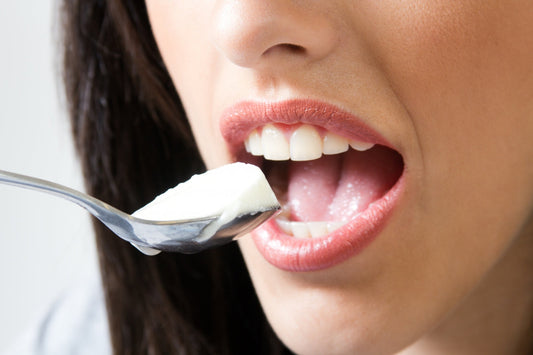Gum Disease and Gum Recession: Causes, Symptoms, and Solutions

Gum Disease and Gum Recession: Causes, Symptoms, and Solutions - Enzim Singapore
Gum disease, also known as periodontal disease, is a prevalent oral health condition that can lead to significant complications, including gum recession. Gum recession occurs when the gum tissue that surrounds the teeth pulls back, exposing more of the tooth or the tooth’s root. This condition can affect individuals of all ages and is often undetected until it results in severe symptoms such as sensitivity, pain, or even tooth loss. Understanding the relationship between gum disease and gum recession is vital for maintaining optimal oral health and preventing long-term complications.
The Link Between Gum Disease and Gum Recession
Gum disease begins with inflammation of the gums, known as gingivitis, often caused by plaque buildup due to poor oral hygiene. If left untreated, gingivitis can progress to periodontitis, a more severe form of gum disease that can lead to the destruction of gum tissue and bone supporting the teeth. As the tissues deteriorate, the gums recede, exposing the roots of the teeth and creating pockets where bacteria can thrive.
Causes of Gum Disease and Subsequent Gum Recession
-
Poor Oral Hygiene: Inadequate brushing and flossing allow plaque to accumulate on the teeth and gums, leading to inflammation and infection.
-
Genetics: Some individuals may have a genetic predisposition that makes them more susceptible to gum disease and its complications, including recession.
-
Tobacco Use: Smoking and chewing tobacco significantly increase the risk of gum disease, impairing blood flow to the gums and inhibiting healing.
-
Hormonal Changes: Hormonal fluctuations, such as those experienced during puberty, pregnancy, or menopause, can make gums more sensitive and vulnerable to gum disease.
-
Misaligned Teeth: Crooked or crowded teeth can create uneven pressure on the gums, leading to recession.
-
Certain Health Conditions: Diseases like diabetes, autoimmune disorders, and conditions that lower immunity can contribute to the development of gum disease and gum recession.
Symptoms of Gum Disease and Gum Recession
Identifying the symptoms of gum disease early is crucial for preventing progression to gum recession. Common signs include:
-
Bleeding Gums: Gums may bleed when brushing or flossing, indicating inflammation.
-
Swollen or Red Gums: Healthy gums should be firm and pink; swollen or red gums are a sign of infection.
-
Persistent Bad Breath: Foul-smelling breath can indicate the presence of bacteria in the mouth.
-
Tooth Sensitivity: As gums recede, tooth roots become exposed, leading to increased sensitivity to hot and cold temperatures.
-
Visible Gaps Between Teeth: Gum recession creates noticeable gaps, making teeth appear longer.
-
Loose Teeth: Advanced gum disease can cause the supporting structures to weaken, leading to loose teeth.
Treating Gum Disease and Preventing Gum Recession
Addressing gum disease and preventing gum recession requires a comprehensive approach, including professional dental care and diligent home care practices.
Professional Treatments
-
Scaling and Root Planing: This non-surgical procedure involves deep cleaning of the teeth and roots to remove plaque and tartar buildup. It helps reduce inflammation and encourages gum healing.
-
Antibiotics: In some cases, your dentist may prescribe antibiotics to help eliminate bacterial infections contributing to gum disease.
-
Surgical Options: For advanced gum disease, surgical interventions such as gum grafting or flap surgery may be necessary to restore gum tissue and health.
Home Care Practices
-
Regular Brushing and Flossing: Maintaining a consistent oral hygiene routine with fluoride toothpaste is crucial for preventing plaque buildup. Brush at least twice a day and floss daily to clean areas that brushing cannot reach.
-
Using Enzim Toothpaste: Incorporating Enzim toothpaste can be beneficial for gum health. This toothpaste contains enzymes and proteins that help combat oral bacteria, supporting overall gum health and preventing gum disease.
-
Rinsing with Antimicrobial Mouthwash: An antimicrobial mouthwash can help kill bacteria and reduce plaque buildup.
-
Healthy Diet: A diet rich in vitamins and minerals, particularly vitamin C and calcium, supports gum health and helps fight infection.
-
Regular Dental Visits: Scheduling regular check-ups with your dentist is essential for early detection and management of gum disease. Professional cleanings can remove hardened plaque that regular brushing cannot.
Lifestyle Changes for Optimal Gum Health
-
Quit Smoking: Stopping tobacco use can significantly improve gum health and reduce the risk of gum disease.
-
Manage Stress: High-stress levels can negatively impact immune function, increasing the risk of gum disease. Stress management techniques like exercise, meditation, and adequate sleep can be beneficial.
-
Control Underlying Health Conditions: If you have conditions such as diabetes or hypertension, managing these can help reduce your risk of developing gum disease.
Conclusion
Understanding the relationship between gum disease and gum recession is essential for maintaining healthy gums and teeth. By recognising the causes and symptoms of gum disease and taking proactive measures to prevent and treat it, you can protect your oral health from the devastating effects of gum recession. Incorporating professional dental care, practising good oral hygiene, and making healthy lifestyle choices will significantly contribute to preserving your gum health. By prioritising your oral health today, you can prevent the onset of gum disease and ensure a brighter, healthier smile for the future.



